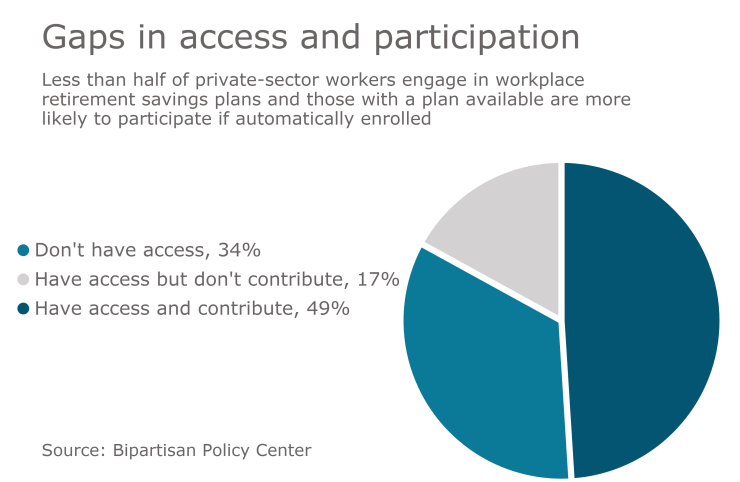Seventy-four million: That’s the estimated number of baby boomers, according to the U.S. Census Bureau. And 66% of baby boomers are working past traditional retirement ages for a variety of reasons. Some feel they can’t afford to retire, particularly with the looming high costs of healthcare; others may choose to work longer to keep their brains active or because they fear the adjustment to a less structured lifestyle.
Older workers approaching full
Break down the HSA rules from a retiree perspective. If you offer HSAs to your employees, it’s important they understand how HSAs work with Medicare: The IRS dictates that a person can’t contribute to an HSA if they’re enrolled in part of Medicare (Part A, Part D, etc.) However, they can draw on funds already in the account to pay for qualified medical expenses and premiums for Medicare Parts B, C and D (but generally not Medicare supplement plans or Medigap insurance premiums).

Importantly, your employees may be penalized for delaying Medicare, depending on the number of employees you have and whether you have group health insurance. These requirements may not be well known by your employees and should be communicated clearly.
Of course, because Medicare, Social Security and any retirement plans involve several layers of government rules and financial regulations, there are some tricky issues your employees need to know about. One is retirement “back pay.”
When employees sign up for Social Security at least six months beyond the full retirement age, they’ll receive six months of retirement benefit back pay. This is problematic if your employees contributed to their HSAs over the previous six months — they are liable for tax penalties on HSAs. Create an education strategy that includes this information for employees looking to retire, so that they can stop contributing to their HSA six months before retirement and avoid costly mistakes.
Help employees understand how all their benefits work together. Your employees have contributed their knowledge and skills to you; it’s important to help them understand their options as they work toward retirement. For those just a few years out from retirement, your education plan may include helping employees understand eligibility requirements for both Social Security and Medicare, as well as any penalties that might arise from applying late to Medicare.
See also:
As your employees age, they are also eligible to contribute “catch-up” funds to HSAs, IRAs and 401(k)s in preparation for retirement. Your 401(k) partners and financial wellness resources can help employees assess their financial situations and prepare for retirement. For example, it’s a good idea to encourage employees who may have multiple 401(k) plans to consolidate them into one — this will make it easier to manage when they retire. They may ultimately roll these into an IRA to access additional investment options.
Maintain a focus on wellness. If you have a wellness program in place, take measures to boost participation and steer employees, especially older participants, toward healthy habits to help them live well and be productive leading up to retirement.
Wellness may extend outside of physical, emotional and mental wellness to professional development. Help them improve their retirement outlook by keeping job skills up to date so they are better prepared if they need to take on other employment to supplement their retirement.
For anyone nearing retirement age it’s a good idea to become acquainted with





